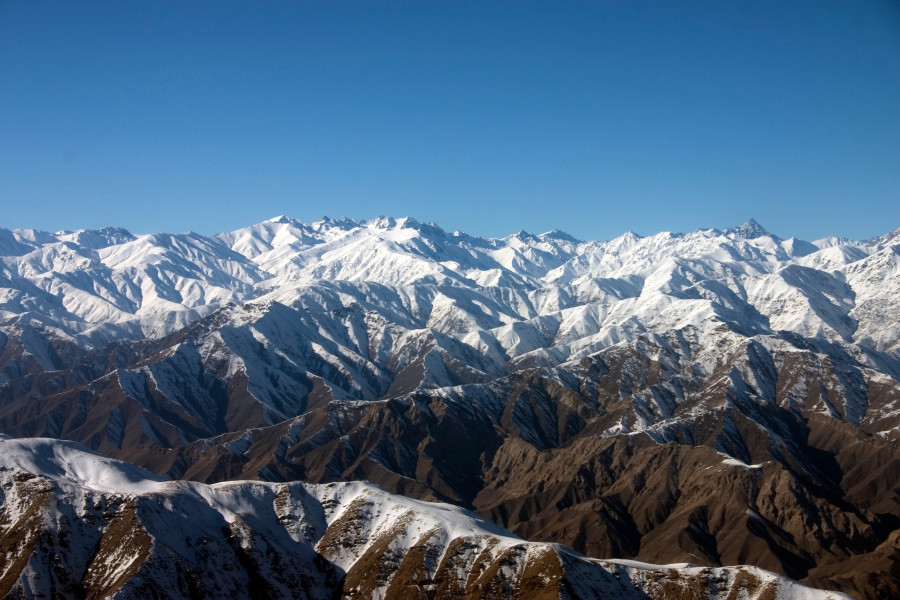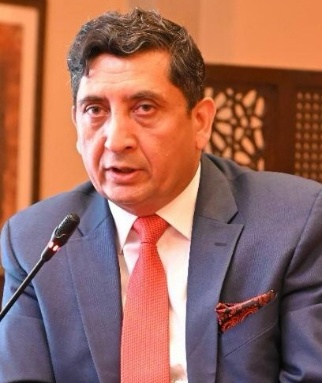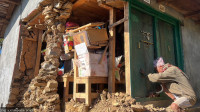Columns
Regional solidarity for disaster preparedness
The HKH nations are positioning themselves as active leaders for a resilient, just and sustainable future.
Abrar H Hashmi
The Himalaya–Karakoram–Hindukush (HKH) region is undergoing profound transformations that threaten its fragile ecosystems and also the resilience, safety and livelihoods of nearly 2 billion people across Asia. This expansive mountain system, shared by eight countries, harbours over 55,000 glaciers—massive ice reserves that feed major rivers such as the Indus, Ganges, Yangtze and the Yarlung Tsangpo–Brahmaputra. These rivers are critical to sustaining agriculture, drinking water supplies and energy systems from the high mountains to the coastlines. Yet, the intensifying effects of climate change are melting these glaciers at alarming rates, undermining long-standing natural balances and exposing communities to cascading disaster risks.
Scientific studies indicate that glacier retreat in the HKH has surged dramatically in recent years. If global temperatures continue on their current trajectory, experts warn that up to 80 percent of glacier volume in the region could vanish by the end of this century. The implications for water security are grave, but so are the repercussions for disaster risk. As glaciers retreat, new and unstable glacial lakes form, increasing the threat of glacial lake outburst floods (GLOFs). Shifting snow and rainfall patterns lead to heightened flood risks, landslides and erosion. These dynamics are not isolated—they affect cross-border ecosystems and populations, revealing the urgent need for a coordinated approach to disaster risk reduction.
Pakistan, like Nepal, is at the heart of the HKH geography and its unfolding crisis. The country is home to the Himalayas, the Karakoram and the Hindukush ranges and boasts more than 7,000 glaciers—the largest concentration outside the polar regions. These glaciers are crucial for Pakistan’s water systems, especially the Indus Basin. However, the country has been increasingly vulnerable to hydro-climatic disasters. The catastrophic floods of 2022 stand as a stark reminder, displacing 33 million people, destroying vital infrastructure and causing economic losses exceeding $30 billion. These were not just humanitarian tragedies—they were wake-up calls about the cost of unpreparedness in the face of intensifying climate hazards.
Across the HKH, communities are going through the daily consequences of environmental and climatic instability. Glacial melt, unpredictable snowfall and altered water flows are disrupting farming cycles, increasing food insecurity and undermining basic services. These climatic shifts are contributing to the rising frequency and intensity of extreme weather events—from flash floods and landslides to droughts and heatwaves—that cut across national borders and overwhelm local capacity. These interlinked hazards demand proactive strategies that prioritise disaster risk reduction and climate resilience as national and regional imperatives.
In response to these growing threats, Nepal has taken an important step forward by convening the first-ever Sagarmatha Sambaad—a high-level global dialogue named after Mount Everest (Sagarmatha). Themed “Climate Change, Mountains, and the Future of Humanity,” the 2025 edition gathered international and regional voices to spotlight mountain vulnerabilities and catalyse action. Central to the discourse was the role of disaster preparedness in protecting lives, ecosystems and infrastructure. Nepal’s leadership in organising this initiative from the climate frontlines reflects the country’s growing influence in shaping global dialogue as a determined actor seeking collaborative solutions to rising disaster risks.
Although countries across the Hindu Kush Himalaya have different disaster management systems, they all face similar hazards and challenges, including floods, landslides and other climate-related disasters. These shared risks also present an important opportunity for countries in the region to learn from one another. In recent years, there has been a growing focus on strengthening regional cooperation through exchanges among disaster management officials, experts and policymakers. These efforts have helped countries share valuable experiences, new ideas and practical lessons on how to better prepare for and respond to disasters, ultimately contributing to stronger, more resilient communities across the region.
An example of such cross-border learning is the evolution of energy-efficient zig-zag brick kiln technology, which emerged in Nepal following the devastating 2015 Gorkha earthquake. To rebuild sustainably, Nepal’s brick industry transformed its traditional kilns into zig-zag designs, reducing fuel consumption by up to 30 percent and lowering harmful particulate emissions by half. The design also offered enhanced seismic resilience due to its modular, flexible structure. Inspired by Nepal’s post-earthquake innovation, Pakistan’s brick industry began adopting the zig-zag technology in 2022, particularly in Punjab and Sindh provinces, contributing to improved air quality, energy efficiency and safer working conditions.
Advancing this spirit of cooperation, in September 2024, Nepali disaster management officials visited Pakistan’s National Disaster Management Authority (NDMA) and its state-of-the-art National Emergency Operations Centre (NEOC) in Islamabad. This facility integrates real-time satellite feeds, hydrological data and digital dashboards for proactive disaster management, offering a model of institutional coordination that Nepal’s own NEOC has now begun adapting. This hands-on exchange deepened Nepal’s understanding of rapid alert protocols, data integration and emergency response coordination, marking a leap forward in Nepal’s multi-hazard early warning capacities. It also opened the door for structured collaboration, including technical working groups on mountain-specific disasters and the creation of a shared inventory of critical disaster management equipment.
On the ground in Pakistan, another powerful example of climate-resilient innovation can be found in the Sindh Peoples Housing for Flood Affectees (SPHF) initiative. Following the devastating floods of 2022, wherein 33 million people were impacted, Pakistan launched one of the world’s largest post-flood housing programmes. Combining technological innovation, transparency and social inclusion, the SPHF has already completed over 400,000 homes, with another 600,000 under construction. Homes are built on raised plinths above historic floodlines using reinforced masonry and lightweight steel frames designed to withstand future inundations.
Leveraging real-time digital monitoring tools and custom-built applications, the programme has ensured 98 percent effective fund utilisation, while also fostering social inclusion by granting land titles to women and opening over 1.16 million new bank accounts for affected families. The SPHF has not only rebuilt homes but also restored dignity and livelihoods, creating over one million jobs and setting new benchmarks for citizen-centred recovery in climate-vulnerable contexts.
These examples show the power of South–South cooperation and the potential of vulnerable countries to lead. When mountain nations collaborate—whether through shared strategies, joint simulation exercises, or knowledge exchanges—they strengthen their own preparedness while contributing to a more resilient region. Institutions with regional offices in Nepal—such as SAARC, ICIMOD and the World Bank—play a crucial role in fostering climate resilience and disaster preparedness across the Hindu Kush Himalaya. By acting as conveners of cross-border collaboration, they help align scientific knowledge, policy dialogue and financial resources. Their support for regional initiatives, technical cooperation and investment in climate-resilient infrastructure and early warning systems is essential in transforming collective goals into meaningful action on the ground.
These experiences underscore the power of collaborations in the South in responding to climate-driven disasters in the HKH region and beyond. From zig-zag brick kilns to state-of-the-art emergency operations centres and climate-resilient housing models, countries like Nepal and Pakistan are showing that vulnerable nations can be at the forefront of innovation and leadership. Their stories challenge the narrative of helplessness and position them as solution providers in the global fight against climate change.
As the world heads towards COP30 and other critical climate summits, the lessons from Sagarmatha Sambaad and the HKH region are clear: Science, solidarity, South–South cooperation and the need to hear the voice of mountain countries in global climate governance. The time to act is now, and the mountain nations are leading the way not as passive victims, but as active champions of resilience, justice and a sustainable future.




 19.12°C Kathmandu
19.12°C Kathmandu















